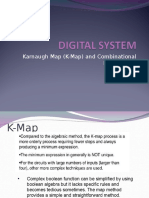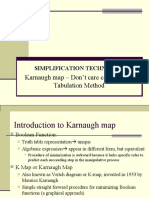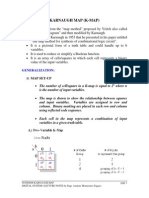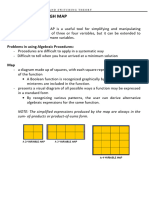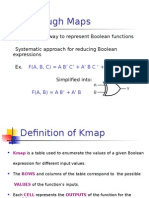0% found this document useful (0 votes)
57 views8 pagesHandouts Week 6 Lecture 1
The document provides information about a lecture on simplifying Sum of Products (SOP) expressions using Karnaugh maps (K-maps). The lecture discusses directly mapping logic functions defined by truth tables to K-maps. Several examples are provided of mapping SOP expressions with various numbers of variables onto K-maps and simplifying the expressions by identifying groupings of 1s in the maps. The examples demonstrate how K-maps can be used to minimize SOP expressions.
Uploaded by
Sammar AbbasCopyright
© © All Rights Reserved
We take content rights seriously. If you suspect this is your content, claim it here.
Available Formats
Download as PDF, TXT or read online on Scribd
0% found this document useful (0 votes)
57 views8 pagesHandouts Week 6 Lecture 1
The document provides information about a lecture on simplifying Sum of Products (SOP) expressions using Karnaugh maps (K-maps). The lecture discusses directly mapping logic functions defined by truth tables to K-maps. Several examples are provided of mapping SOP expressions with various numbers of variables onto K-maps and simplifying the expressions by identifying groupings of 1s in the maps. The examples demonstrate how K-maps can be used to minimize SOP expressions.
Uploaded by
Sammar AbbasCopyright
© © All Rights Reserved
We take content rights seriously. If you suspect this is your content, claim it here.
Available Formats
Download as PDF, TXT or read online on Scribd
/ 8

















